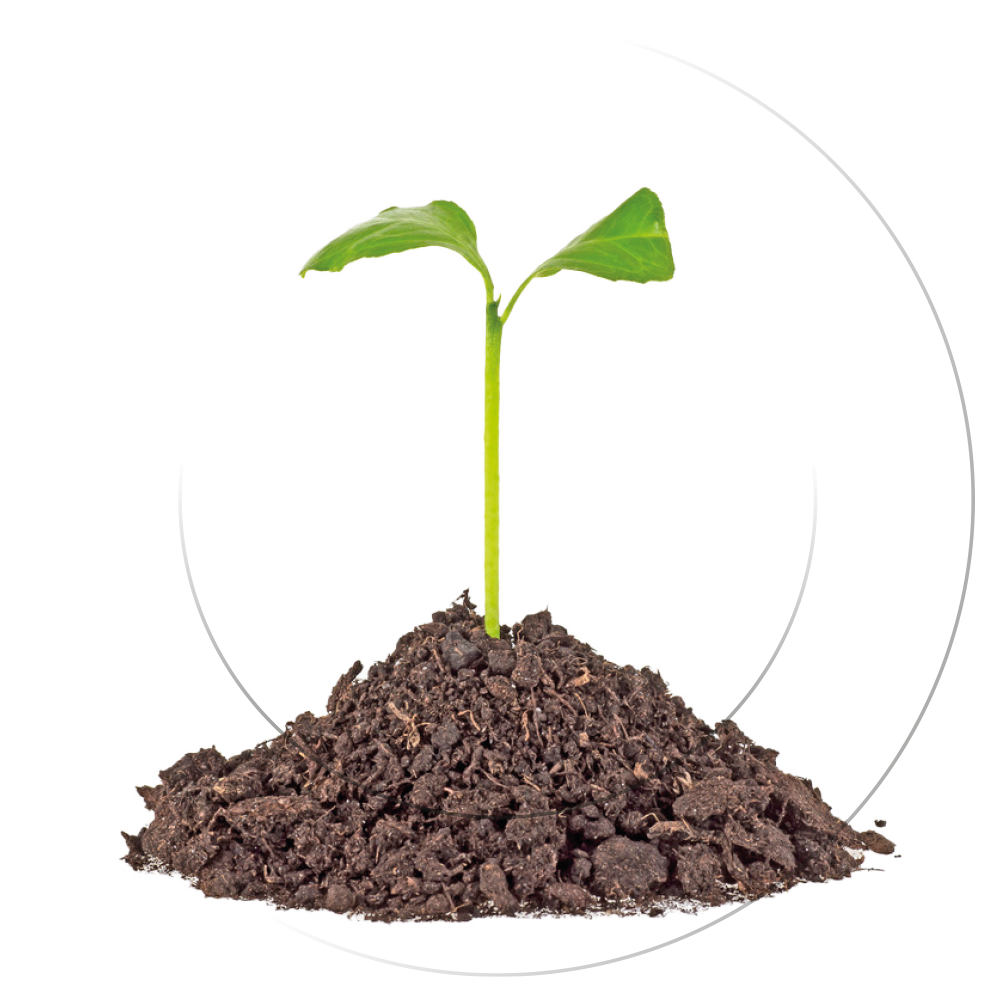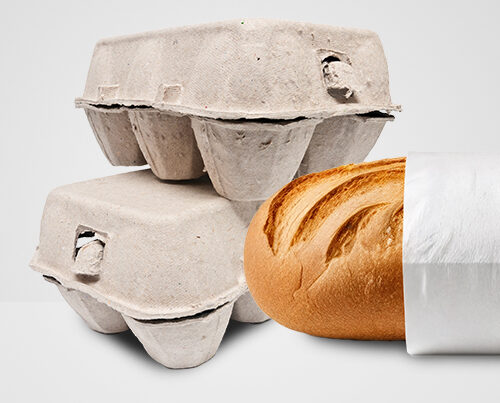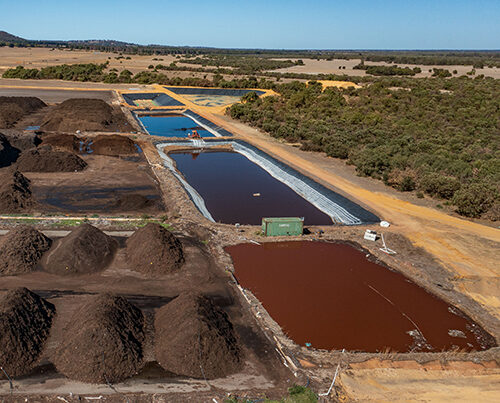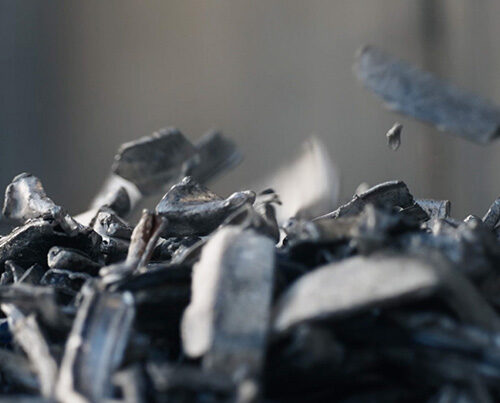For most people ‘doing something for the climate emergency’ is synonymous with cutting back or renouncing things. For example reducing the carbon emissions of industry, traffic and buildings. A less known fact is that CO2 can also be removed from the atmosphere. The first projects that might come to mind here are perhaps reforestation projects. Or the recent industrial solution in Denmark that focuses on compacting and storing carbon dioxide in an old gas field.
And yet our planet has natural carbon stores, such as moors, permafrost soils, coal, our seas and also the humus in our soils. Humanity has drained these systems over the years. They offer an opportunity, however, to remove CO2 from the atmosphere and store it in a perfectly natural way, something also referred to as carbon sequestration. And this topic has much to do with the circular economy as the compost produced from the materials in the food and garden waste bins is ideal for building up humus in soils. Which makes it all the more difficult to understand why, even though they are obliged by law to do so, so many local authorities in Germany prefer not to have a dedicated organic waste collection scheme in their region or ask their local residents to take these materials to their local recycling centre, a far less effective system.
Latest estimates assume that 3.4 trillion tonnes of carbon dioxide are currently being stored by our world’s forests and soils alone.
Refilling the stores
Carbon sinks are a natural process and are carbon stores that take in more carbon than they emit over a long period of time. They are part of the global carbon cycle and have always had an impact on the Earth’s climate, tipping it in one direction or the other. Latest estimates assume that 3.4 trillion tonnes of carbon dioxide are currently being stored by our world’s forests and soils alone. Based on the global carbon emissions caused by humans in 2022, this is equivalent to the amount of emissions produced over a period of more than 80 years. Looking at it the other way round, it is believed – and this is a conservative estimate – that our forests and soils have the potential to remove a further 400+ billion tonnes from the atmosphere, the carbon emissions of the last seven years.
There are different kinds of carbon sinks. Natural sinks include bonding in rocks caused by geological processes (coal), the storage of plant material in soils that has not been completely broken down (humus) and plants – primarily forests but also agricultural plants in shorter cycles.
Building up humus in arable land makes an important contribution towards curbing climate change. One of the measures agreed on at the UN Climate Conference in Paris in 2015 was to set up a global programme to build up humus. The ‘4 per 1000 Initiative’ aims to grow soil carbon stocks by a rate of 0.4% every year – a step, the programme’s initiators believe, would compensate for practically all carbon emissions related to human activities.

Building up humus in arable land makes an important contribution towards curbing climate change.
NABU: Councils’ collection of organic waste is inadequate
Rarely has the content of the household kitchen and garden waste bins been as valuable as it is today; whether it be as the input material for compost, as the input material for producing biogas – or as the input material for both. Which makes it all the more puzzling why there are still regions in Germany that are not able to have their organic waste collected separately from other waste streams – even though the German Circular Economy Law [KrWG] made it obligatory for local authorities to offer such collection schemes back in 2015. NABU [German Nature and Biodiversity Conservation Union] recently published a report detailing just how many local authorities have failed in this area.
Environmental campaigners have criticised the fact that 15% of German district and town councils do not provide organic waste bins across the whole of their region. In some cases, they do not even offer their local residents the possibility to take this waste to a collection point. A further 14% merely offer a voluntary food/garden waste bin. And all this even though it has been known for a long while that introducing an obligatory organic waste bin is the most effective solution. Districts and towns with obligatory organic waste bins collect, on average, significantly less residual waste than the areas with voluntary organic waste bins or collection point systems. These figures have been confirmed by NABU.
According to this association, just 63% of households are part of an organic waste collection scheme. Obligatory organic waste bins result in a significantly higher number of households taking part in such a collection scheme (76%) compared to voluntary bins (46%). Large cities with their own waste-to-energy (WtE) plants collect, on average, far less waste via organic waste bins and more waste via general waste bins than large cities without a WtE plant – a fact that doesn’t surprise industry experts.
Even before the NABU study came out, it was clear that Germany still lies far behind the statutory requirements in this field: between 2014 and 2020, the volumes of collected organic and garden waste increased by just 10%.
For a long while now, REMONDIS has been calling for these gaps in the kerbside collection schemes to be closed. If 39% of the contents of general waste bins in 2020 were biogenic materials – an estimate given by the UBA [Federal Environment Agency] – then far too many things are still going wrong with the country’s waste collection system. Too much biomass – and its carbon content – continues to end up at WtE plants as general waste. What is important here is to take the collection scheme to the local residents, i.e. to provide households with organic waste bins that are regularly emptied and teach them how to use them properly so that fewer materials are thrown into the wrong bin.
Take a look at NABU’s study (German)
Where REMONDIS believes action must be taken
Enriching humus
This is where carbon farming comes into play. It involves measures to enrich the levels of carbon in agriculturally used soils. According to industry experts, between 50% and 70% of the organic material in humus has been lost since farming in Germany was first industrialised, with the corresponding amount of CO2 being released into the atmosphere. The ability of soils to store water and provide plants with water during droughts has been greatly reduced. Besides intensive farming practices, this loss of humus and the reduced potential of soil to store carbon can also be put down to soil acidification. A key factor here is acid rain. If the pH value of soil drops, then its capacity to produce humus falls as well.
Measures taken to build up humus have a number of objectives: on the one hand, to reduce carbon loss caused by plant growth and erosion and, on the other, to increase the amount of carbon removed from the atmosphere by dead plant matter and by adding new material to the soil. There are a number of different carbon farming methods: agroforestry, biochar and compost are just three.

If the pH value of soil drops, then its capacity to produce humus falls as well.
Agroforestry is a land management approach that combines forestry with arable farming and animal husbandry. Perennial trees used, for example, to grow fruit or for timber are planted on the same land together with annual arable crops. This ensures that the soils are not depleted by just one type of plant.
Biochar is a modern form of charcoal. It is produced by burning organic material in a low-oxygen process so that the majority of the carbon remains in the material rather than being released into the atmosphere. This remarkably resistant material can be added to soils and used as a long-term, slow-release source of carbon for many generations of crops instead of expensive, climate-damaging, man-made fertilisers.
Carbon farming does not differentiate between conventional farming and organic farming. Both types of farm benefit from living humus.



Building up humus will be a marathon not a sprint and will take decades.
And compost also plays an important role in building up the humus content of agricultural land. Compost is a nutritious fertiliser made from organic material. Besides using harvest and plant residue, processed household organic bin contents and tree and plant cuttings can be used to build up humus levels in soils. Digestate from biogas plants is also a good source. Moreover, spreading compost helps to counteract soil acidification as it contains high levels of lime and magnesium.
At the end of the day, it is all about putting the right mix in place. Each farmer must consider the conditions of their land and identify which individual measures will be most effective so that carbon farming helps mitigate climate change. Changes will also need to be made in the areas of soil care and crop rotation and the use of agricultural land must be mixed, alternating between arable crops and pasture land. Building up humus will be a marathon not a sprint and will take decades. And this will also put an end to a long-lasting dispute: carbon farming does not differentiate between conventional farming and organic farming. Both types of farm benefit from living humus.
Image credits: image 1: Adobe Stock: Vitaly Krivosheev; image 2: Adobe Stock: domnitsky; image 3, 4: Adobe Stock: kolesnikovserg












